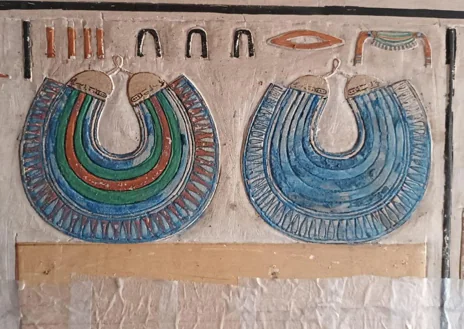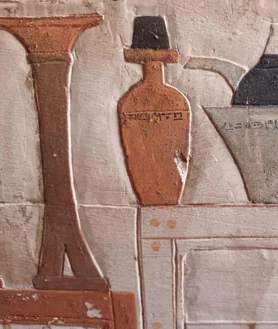A joint French-Swiss archaeological mission has discovered in Saqqara the tomb of a royal doctor called ‘Teti Neb Fu’, who lived in the time of Pharaoh Pepi II (2278-2184 BC) and who had prestigious titles such as Chief Physician of the Palace, Priest and ‘Magician of the goddess Serketa specialist therefore, in the healing of venomous stings and bites scorpion or snake.
The inscriptions further reveal that ‘Teti Neb Fu’ was «director of medicinal plants“, a title that has only been seen in one other ancient Egyptian discovery, according to Philippe Collombert, leader of the Swiss-French team and Egyptologist at the University of Geneva. And he also held the rare position of ‘chief dentist‘. «He was probably the main doctor of the royal court, so he would have treated the pharaoh in person,” Collombert told Live Science.
The ‘oven tomb’ excavated this year in front of the Ouni mastaba struck archaeologists as quite banal on the surface. The mission had discovered several burials of this type in the necropolis, even in that same sector. They were simple adobe monuments, with limestone walls, which rarely contained any material because the cemetery had been largely looted.
In this burial, however, they got a surprise, according to what they say in your blog. “As soon as we started cleaning over the monument well, we were lucky to find a magnificent false door stele in the name of a doctor called Teti Neb Fu’,” they relate.
In the passage leading to the burial chamber, they found the lintel of the burial chamber, with beautiful and large hieroglyphs repeating the name and titles of Teti Neb Fu. Their astonishment increased even more when upon cleaning the room they discovered that the walls of the funerary chamber were completely decorated with brightly colored paintings. «“It’s easy to forget that they are 4,000 years old!”they assure.


The team also discovered a stone sarcophagus with inscriptions which bore the name and titles of the doctor. Looted in ancient times, only small fragments of the funerary material remained, but the decorations of the tomb and the beautifully painted door with scenes of funerary offerings make this discovery “exceptional”, in his opinion.
Mohamed Ismail Khaled, secretary general of the Supreme Council of Antiquities, highlighted the importance of this discovery that reveals new aspects of daily life at the time through the inscriptions and decorations found on the walls of the tomb. “This incredible find adds to Saqqara’s rich legacy as one of the most important archaeological sites in Egypt,” Egypt’s Ministry of Tourism and Antiquities agreed in a statement.
Located about 30 kilometers south of Cairo, the Saqqara necropolis was the most important in Memphis, the capital of the Old Kingdom, and the favorite of the Egyptian rulers of the time.
#tomb #royal #doctor #specialized #poisonous #stings #Egypt


